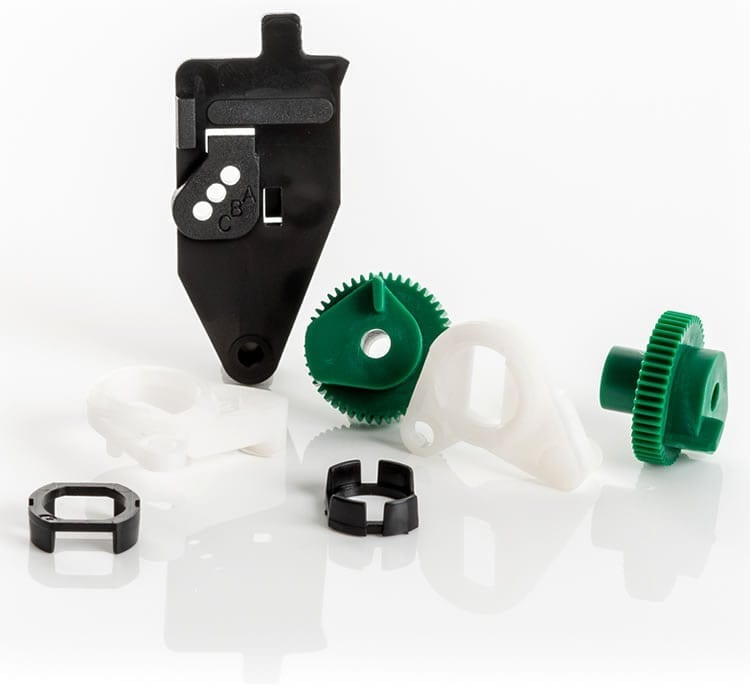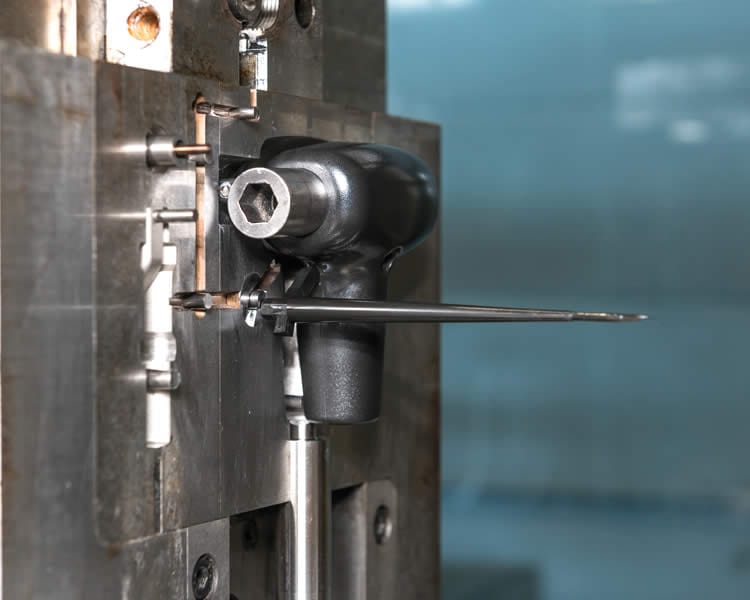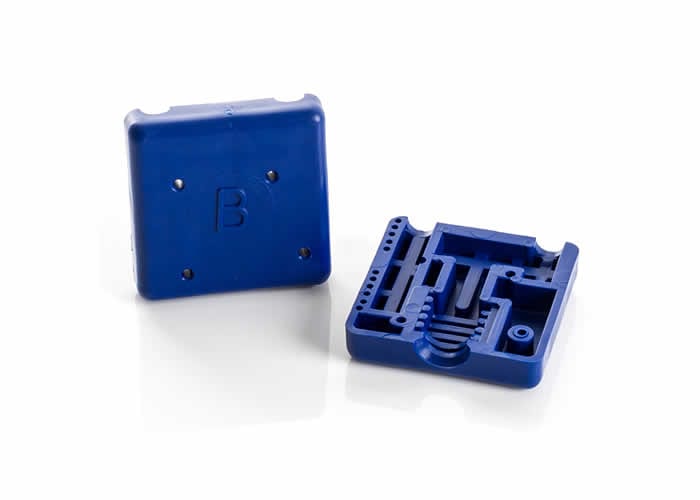Plastic Injection Moulding
50 Years Experience
Low Cost Base
No Minimum Order
No Obligation Quotes
Strict NDAs
Short and Long Runs
Here at Moldwel Ltd, first established in 1973, we have years of experience as leading plastic injection moulders. Our ethos is to maintain a personal relationship with customers. We do this by providing stability within the plastic injection moulding process, which results in peace of mind. We strive to maintain our family based approach whilst offering high quality moulding skills and expertise. All of which are associated with far larger, multi-national companies in the same industry.
Our focus is not only on creating components that customers require, but to also provide a complete full injection moulding service. This will include:
- Design
- Tool Making
- Assembly
- Labelling
- Delivery
What is plastic injection moulding?
Plastic injection moulding is a type of manufacturing process. It is used to create small and large volume batches of an identical product. Hot melted plastic is injected into a mould tool that will be a design of the product you wish to make. Once the plastic has cooled and hardened, it is pushed out of the mould. The result will be a complete shape of your desired product.

1. Creation of the Mould
To make the plastic shape, the melted plastic is injected into a solid template (the mould). The moulds are produced in accordance with the required standards. Additionally, they must include the cylinder that the injection drill and plastic may fit into as well as the mould shape.
2. Choosing The Injection Moulding Machine
Depending on the product, a different injection moulding machine may be used for manufacturing. Our injection moulding machines at Moldwel weigh anywhere between 35 and 328 tonnes. They can produce goods with weights between 0.1 and 1050 grammes.
3. Clamping the Mould into the Machine
The machine’s clamping unit is used to secure the mould. This ensures the product is kept secure during the plastic injection moulding process as well as cooling. It must also be set so that the injection unit – the large drill – can enter.
4. Plastic Pallets are Fed into Cylinder of the Mould
Plastic materials are fed into the cylinder of the mould, typically in the form of pellets. Then, this is reduced to a molten state. The molten plastic is pushed to the cylinder’s end by a motorised screw inside the heating cylinder.
5. The Injection Process Starts
The injection process begins after the plastic has gathered at the end. The plastic is progressively injected or drilled through the cylinder and into the mould by a carefully managed screw or ram.
6. Filling Every Cavity with Plastic
The “Dwelling” step follows the injection of the plastic into the mould. At this point, pressure is applied to ensure that plastic has been placed inside every single cavity of the mould.


7. Plastic Cools & Sets
The plastic is allowed to cool inside the mould and establish shape after being completely compressed.
8. Easy Removal of Plastic Product
After the plastic has had time to cool, the clamping unit is opened. The mould’s two sides split open to make it simple to remove the plastic item.
9. A Complete Plastic Product
To remove the plastic from the mould and produce a finished plastic object, an ejection rod, an ejection plate, or a burst of air may be used.
Individual components of larger items to finished goods themselves can be created using plastic. First aid kits or electrical enclosures are two examples.
Injection Mould Tools – What are they?
An injection mould tool is what is used to hold the molten thermoplastic. The plastic is poured into the open void and once the plastic has hardened, will form the final shape of the product. The tool is usually split into two. One piece is known as fixed, and the other as moving. The two halves of the tool open and close to allow the component to be ejected from the mould tool. It is important that the air can escape from the mould. If it can’t, the component could end up with voids, burn marks, and a poor surface finish.
Temperature
Another important factor to bear in mind is the temperature controls. Plastics will have specific rates in which they solidify to produce a quality and durable component. Getting the cooling rate wrong can result in a distorted and unreliable product. The temperature is usually controlled by water, oil or electricity – depending on the material requirements.
Ejection
Once set inside the mould, the component is then ready to be ejected from the form (core). Ejection is usually done through pins, sleeves, stripping plates or air.
The economics
Injection moulding is very economical. One of the reasons why is because the mould tool is not necessarily limited to producing just one component per shot. Multi-cavity tools can be manufactured which can produce multiple different parts each time they open. Family moulds can also be produced. These are moulds that can produce more than one type of product per shot. Here at Moldwel, we’ll go through all of the most suitable mould tools that we can produce. We will then determine the most cost-effective solution to create your component with.
Selecting your Materials
Choosing your material is a key element when it comes to bringing your ideas and designs to life. There’s plenty of different materials and grades to choose from, all of which are developed to meet specific requirements.
Materials will generally have different properties that affect the overall properties of the finished product. These factors will also determine the parameters used when working with the materials. For example, the melting temperature, filling speed, fill pressure and the temperature of the mould.
Quality Results
Using our in-house tooling solutions, we’ll create bespoke plastic moulds made to your exact requirements. As highly experienced plastic injection moulders, we can work with a wide range of thermoplastics. These include, HIPS and ABS.
Vast Experience
With over 40 years of experience, we are fully flexible and able to handle the production of high quality plastic components for an array of applications. Our lean plastic injection moulding process can handle either short or long runs. Additionally, there is no minimum order to what we can produce.
Our Quality Guarantee
At Moldwel we guarantee to provide a quality plastic injection moulding service for all our customers. Our team of plastic injection moulders can handle and manufacture all forms of plastic products. This includes low volume electrical components and engineered plastics. As well as products that fall under mass multi cavity production.
